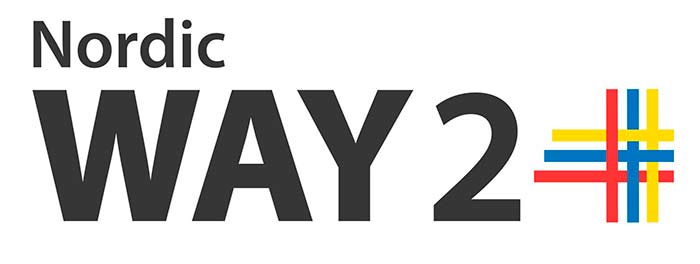Final results of project investigating road transport automation in winter conditions gives solution proposals for vehicles and the Finnish road network
Automation of road traffic requires interoperability of services and adequate network connections in Arctic snow and ice conditions. Vehicle positioning can be improved with marker posts equipped with radar reflectors or radio technology as well as sensors, laser scanning and high-definition maps.
The Arctic Challenge research project funded by the Finnish Transport Infrastructure Agency and the Finnish Transport and Communications Agency Traficom sought out, in cooperation with 15 companies, solutions to the challenges of road transport automation in snow and ice conditions. The final results of the project were presented at the final seminar on 26 November 2019.
Over a number of test weeks and in different locations including the Aurora Smart Road along Highway 21 in Muonio, the project studied the following four areas: marker posts and snow plough guide markers, messages anticipating traffic conditions (e.g. a warning of a stopped vehicle on a road), remote steering and wireless transfer of information, and location information and positioning.
Automated vehicles, the platooning of trucks, and robotic buses or taxis all have the potential to provide safer and smoother transport, reduced emissions and increased travel comfort. In order to obtain the full benefits of automation, it must also function in northern snow and ice conditions.
‘The final results of the project show that existing technologies can already be used to solve the challenges of automated transport in winter conditions. However, the solutions require extensive cooperation and discussion on matters such as standardisation. In the studies, companies presented a number of innovative solutions that should now be carried forward for discussion not only in Finland but also with different collaboration groups and for the international market,’ says Project Manager Niklas Fieandt from the Finnish Transport Infrastructure Agency.
‘There are already several experiments in road transport automation being carried out both in Finland and elsewhere. For the first time, we are now receiving more detailed information on the requirements for operating in winter conditions. The testing permits granted by the Finnish Transport and Communications Agency Traficom for automated vehicles have previously mainly been used for testing carried out in summer conditions,’ says Project Manager Ilkka Kotilainen from Traficom.
Vehicle positioning and remote control is challenging in Arctic conditions
‘During the project, we noticed that radar sensors can be used to improve the positioning of the automated vehicle. We developed plastic marker posts containing radar reflectors, and placed these by the roadside. In the testing of more than one hundred marker posts, radar reflectors were found to work well at a test vehicle speed of 80 km/h. The trucks ahead and the snow spray weakened the detection of the radar reflectors,’ says Chris Händel from the work consortium of Lapland University of Applied Sciences Ltd and Roadscanners Oy.
‘In the first tests, warnings transmitted to the driver about a stationary vehicle, an animal on the road, road conditions and roadworks functioned well in Arctic conditions with both the mobile network and short-range radio technology. Warnings of weather and road conditions and, for example, reindeer warnings could be of particular benefit to road users in the North. However, there are still differences in the technical functioning of the services, and they are not interoperable across borders and between different service providers. VTT's automated Vehicle ‘Martti’ performed well in testing despite the challenges caused to sensor detection by snow spray,’ says Risto Öörni from the VTT group, which also included Dynniq, Indagon and Infotripla.
With the Sensible 4 company's automated vehicle, positioning to within an average of 20 centimetres was achieved using multiple sensors, satellite positioning, virtual high-definition maps created from point clouds using laser scans in both summer and winter conditions, and an algorithm that utilises all this data.
‘Remote control of the automated vehicle was found to work well even in exceptional situations, such as if there is an obstacle on the road that the vehicle must steer around, provided that the connection to the vehicle is good enough. The expansion of communication services between vehicles and 5G network technology will improve the utilisation of remote control in the future,’ says Harri Santamala from Sensible 4.
The project was funded by the Finnish Transport Infrastructure Agency, the Finnish Transport and Communications Agency Traficom and the European Commission's Connecting Europe funding.
Arctic Challenge Project, Final report
Further information
Niklas Fieandt, Finnish Transport Infrastructure Agency, Project Manager, [email protected], t. +358 (0)29 534 3138
Ilkka Kotilainen, Traficom, Project Manager, [email protected], t. +358 (0)29 534 6708



The Finnish Transport Infrastructure Agency is responsible for developing and maintaining the state-owned road network, the railways and the waterways. Through our tasks, which include maintaining the level of service of transport, we promote wellbeing in society and competitiveness of Finnish industry.
Attachments
